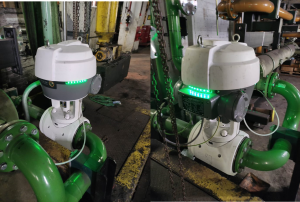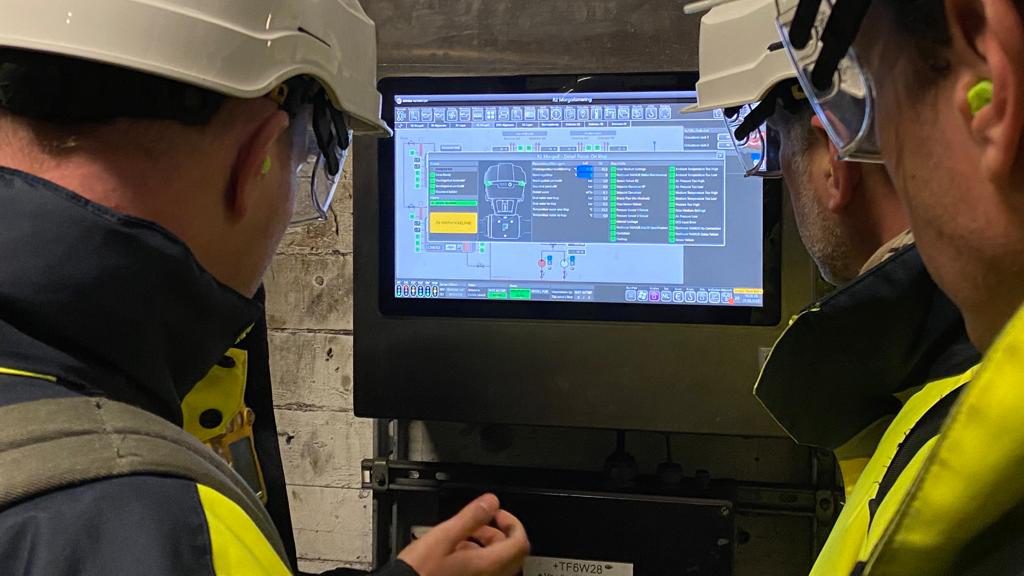- Easy & Simple Installation due to integration of both measurement and control
- Combined solution enables for fast and rapid control
- Digitalization of the asset with real time data
- Heat exchanger lifetime prolongation with extensive data insight
Background
Arcelor Mittal is a global steel and mining company. With operations in over 60 countries, it is the world’s largest steel producer. The company is involved in every aspect of the steel industry, from mining and processing raw materials to manufacturing and distribution of steel products. Arcelor Mittal is known for its diversified portfolio, innovative technologies, and commitment to sustainability. It plays a crucial role in supplying steel for various sectors, including automotive, construction, and infrastructure.
Control Requirements
Thermal oil is commonly used in steel mills, including the hot strip mill, to transfer heat efficiently. It helps maintain the correct temperature in rolling mills and continuous casting machines, which generate significant heat during steel production. Cooling the thermal oil prevents overheating and equipment damage. It also improves heat transfer efficiency and enables precise temperature control during steel production. Additionally, cooling the thermal oil enhances energy efficiency by reducing energy wastage and promoting more efficient mill operation.
To cool down the Oil, Arcelor Mittal is making use of a heat exchanger which uses water as the medium to cool down the oil. Traditionally, in conventional heat exchanger applications, a control valve is installed, and a setpoint is provided to regulate the valve opening percentage. The temperature of the oil is measured with a temperature sensor and communicated to the Distributed Control System (DCS), which generates the setpoint to the valve. A higher temperature measured required more opening of the valve, resulting in more cooling capacity. However, this conventional setup faces latency (delay) that can affect the efficiency of the heat exchanger. Furthermore, a traditional setup falls short on measurements, which means lack of data. This data can be used for comprehensive analysis of the heat exchanger’s efficiency.
FOCUS-ON Solution
By replacing the traditional valve with a FOCUS-1, the process operator maintains all required control & monitoring capabilities with additional insights into the efficiency of the heat exchanger. By combining all the measurement & control components in one device, the operator can, based on the data collected by FOCUS-1 decide the best control behaviour regardless of any process condition changes.

Instead of having a separate temperature sensor connected to the DCS to determine the setpoint of the control valve. The temperature setpoint can be given directly to FOCUS-1 via conventional communication protocols. FOCUS-1 internal PID Controller determines the best valve position for the desired flow rate.

Setup with FOCUS-1
Customer Benefit
A faster and more stable control results in a higher performance of the heat exchanger. This results in lower energy consumption in periods of less heat supply or more production demand. During this period FOCUS-1 collects all data including control behaviour & measurement parameters of to the Heat Exchanger. In case of any changes in process conditions FOCUS-1 will detect, alarm and advise in case necessary. This all resulting in a longer lifetime with lower OPEX expenditure.
Product used: FOCUS-1

- The Smart Meter Valve For Flow, Pressure and, Process Control
- An All-In-One solution features, control valve, flowmeter, pressure and temperature sensors
- All components are standard SAMSON & KROHNE Devices successfully used for decades
- All sensors are designed redundantly
Contact
Would you like further information about these or other applications?





